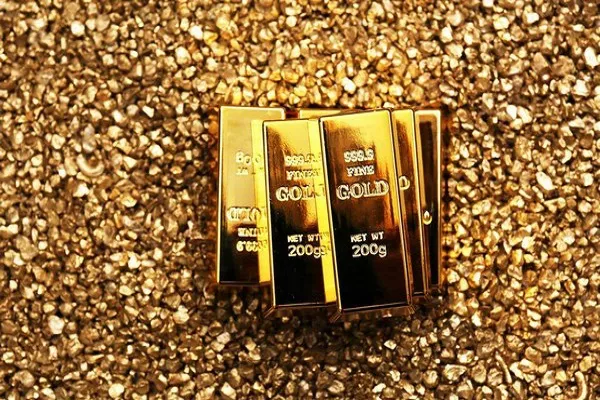The allure of gold has captivated humanity for centuries, and when it comes to jewelry, a gold ring stands as a timeless symbol of elegance and sophistication. However, with the market flooded with various alloys and imitations, determining the authenticity of a gold ring becomes a crucial skill. In this comprehensive guide, we explore the nuanced methods and key indicators to discern whether a ring is truly made of real gold, equipping you with the knowledge to make informed decisions when it comes to precious jewelry.
1. Introduction: The Quest for Authenticity
Importance of Authenticity:
Authenticity in jewelry holds paramount importance, especially when dealing with precious metals like gold.
Knowing how to distinguish real gold from imitations empowers consumers to make informed purchases and ensure the value of their investments.
2. Understanding Gold Purity: The Karat Conundrum
The Karat System:
Gold purity is measured in karats (k), with 24k being pure gold.
Common gold alloys include 18k (75% gold), 14k (58.3% gold), and 10k (41.7% gold).
Hallmarks and Stamps:
Legitimate gold jewelry is often stamped with hallmarks indicating its purity. Look for markings like “18k,” “14k,” or “10k” on the inside of the ring.
Verify the stamp’s presence and clarity, as genuine gold jewelry typically bears this identifying mark.
3. The Magnet Test: Gold’s Non-Magnetic Nature
Gold’s Magnetic Properties:
One of the distinctive features of gold is its non-magnetic nature. Unlike metals like iron or nickel, gold does not attract magnets.
Use a small, strong magnet to test the ring. If the ring is attracted to the magnet, it likely contains metal alloys and is not pure gold.
4. The Acid Test: Assessing Gold Reactivity
Acid Testing Basics:
Acid testing involves applying a small amount of nitric acid to the ring.
Real gold does not react to nitric acid, but alloys may exhibit discoloration or fading due to the corrosive nature of the acid.
Caution and Professional Testing:
Conduct acid tests cautiously, as they can damage the jewelry’s surface.
For a more accurate assessment, consider seeking professional jewelers who have the expertise and proper equipment for acid testing.
5. Specific Gravity: Gold’s Density Signature
Understanding Specific Gravity:
Specific gravity measures the density of a material, and gold has a specific gravity of approximately 19.32.
This property allows for a simple water displacement test.
Water Displacement Test:
Fill a container with water and note the water level.
Submerge the ring in water and observe if it displaces the water. Real gold will displace water, reflecting its higher density.
6. Hallmark Examination: A Closer Look at Stamps
Proper Stamping Characteristics:
Genuine gold jewelry is typically stamped with hallmarks indicating purity and sometimes the manufacturer.
Inspect the stamp for consistency, clarity, and depth, as authentic stamps are usually well-defined.
Microscope or Magnifying Glass:
Use a microscope or magnifying glass to closely examine the stamp. Genuine gold stamps should not exhibit signs of flaking, smudging, or irregularities.
7. Weight Comparison: Assessing Gold’s Heft
Heft and Feel:
Gold has a distinct weight and heft that sets it apart from lighter metals or alloys.
Compare the weight of the ring to your expectations based on its size and the stated karat purity.
8. Professional Appraisal: Consulting Experts
Jeweler’s Expertise:
Seeking the expertise of a professional jeweler or appraiser is a reliable way to determine the authenticity of a gold ring.
Jewelers use specialized tools and techniques, including X-ray fluorescence, to assess gold purity accurately.
Accredited Appraisers:
Choose accredited appraisers affiliated with recognized organizations to ensure a trustworthy evaluation of your gold ring.
9. Common Imitations: Recognizing Gold Plated and Gold-Filled Rings
Gold Plating:
Gold-plated rings have a thin layer of gold over a base metal. The gold layer can wear off over time, revealing the underlying metal.
Look for signs of fading, tarnishing, or peeling, especially around edges and areas of friction.
Gold Filled:
Gold-filled rings have a thicker layer of gold bonded to a base metal, making them more durable than plated ones.
Check for markings like “GF” or “1/20,” indicating the gold layer’s thickness.
Conclusion: Mastering the Art of Authentication
In conclusion, the quest to determine whether a ring is real gold requires a combination of knowledge, careful observation, and sometimes professional expertise. Understanding the karat system, conducting simple tests like the magnet and acid tests, scrutinizing hallmarks, and comparing weight can all contribute to an accurate assessment.
While at-home tests can provide valuable insights, it’s essential to approach them with caution to avoid damaging the jewelry. When in doubt, consulting a professional jeweler or appraiser ensures a thorough and accurate evaluation of your gold ring.
Mastering the art of authentication empowers consumers to make informed decisions when purchasing gold jewelry, ensuring that the timeless allure of a gold ring is coupled with the confidence of its authenticity. Whether it’s an heirloom passed down through generations or a new addition to your collection, the knowledge gained from this guide will serve as your compass in navigating the world of gold jewelry authenticity.

